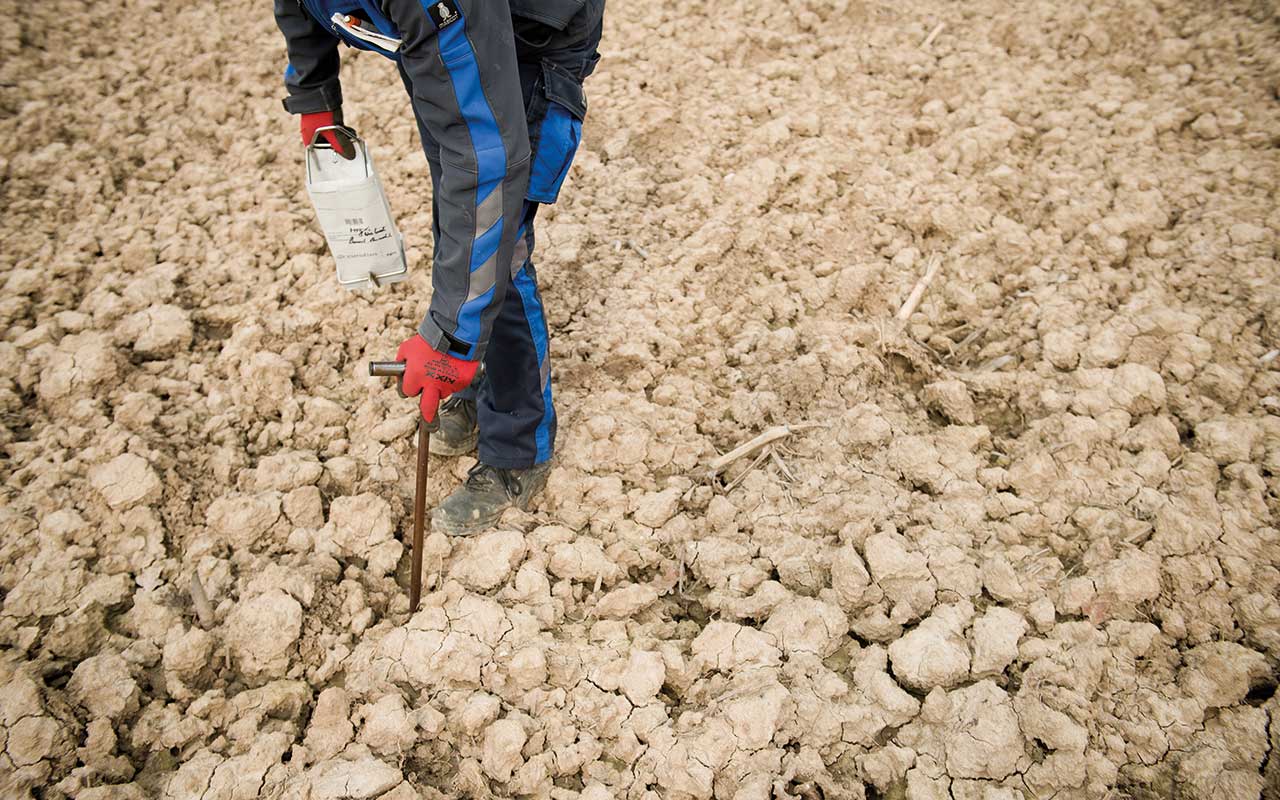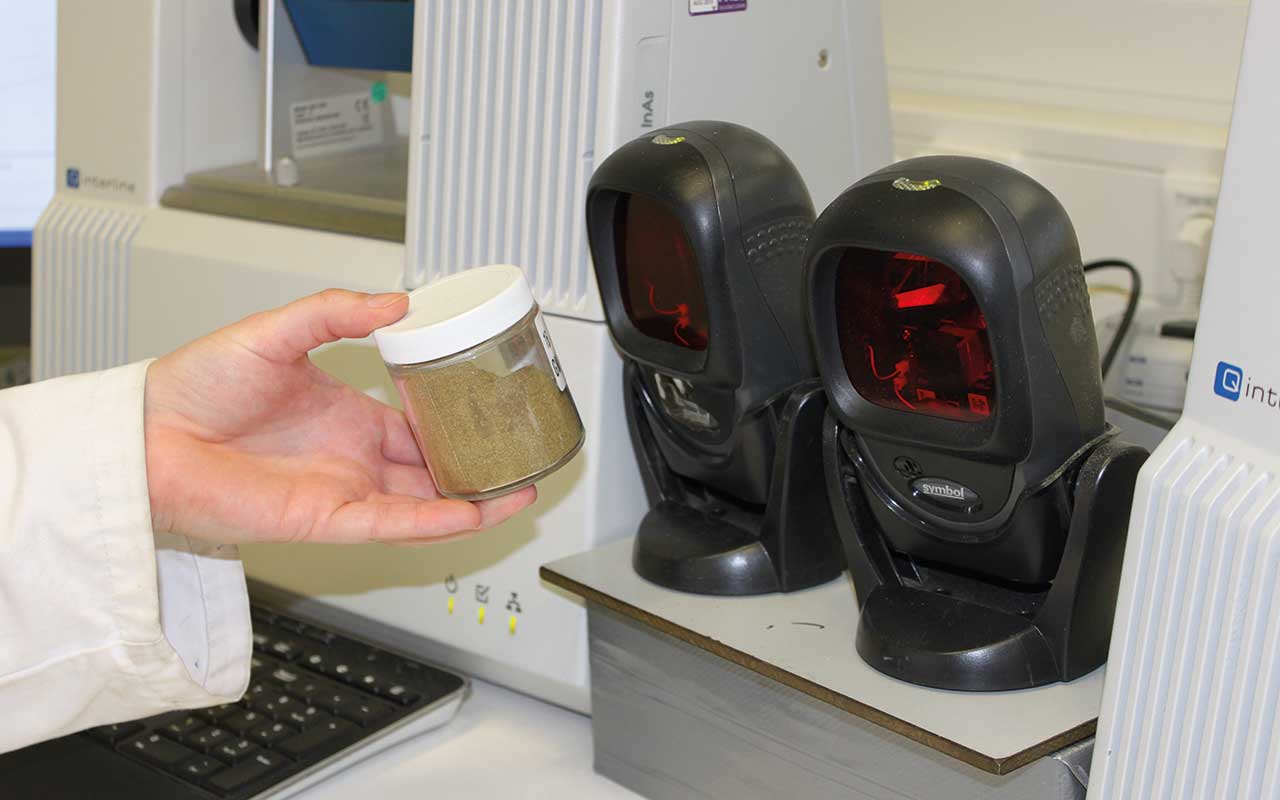Periods of heavy rain and flooding have complicated crop establishment. Key nutrients are leached away, meaning that germinated crops can be put under increased stress, while later-drilled seeds can be put into conditions where compaction and leaching restrict access to nutrients.
As such, there has been increased focus on the potential benefits of soil testing. Dr Ir JA (Arjan) Reijneveld, lead soil health scientist/international product management for Eurofins Agro, explains that the three levels of soil testing offered by Eurofins can help growers not only react to unforeseen weather, but proactively monitor soil health to maximise the efficacy of applied nutrients and reduce input costs.
Chemical testing
The most widely used test shows the chemical makeup of the soil, highlighting where nutrients may be available to the plant, or locked up. After a severe storm or flood, this can show where key nutrients have leached, such as nitrogen, sulphates and potassium. While phosphates don’t leach, it can also show if there are high levels in the soil, binding with other elements within the soil and becoming unavailable to the plant.
“These tests not only give an available and locked figure for the macronutrients, where much of the farm’s investment goes, but will also indicate the level of micronutrients, including boron, manganese, zinc and iron,” says Arjan.
“In the correct amounts, these are vital to plant development, but where too much is present, they can become toxic.”
If we take nitrogen as the focus, and where much of that nutrient investment goes, these tests can also indicate structural issues within the soil.
Arjan says very wet, compacted soil will reduce oxygen levels, limiting mineralisation and leading to nitrogen converting to nitrous oxide, which exits the soil into the atmosphere – resulting in increased greenhouse gas emissions and wasted spend.
The effects of wet weather has been a focus for the industry given the past two years, but testing the chemical elements of the soil has additional benefits.
Salt concentration has previously been a concern in arid climates, but with longer periods without rain, farmers should be aware of this as it can cause issues with root development, limiting the uptake of nutrients. Testing will indicate if levels become too high.
Another consequence of continued dry weather is an inability for the plant to sequester nutrients.
This creates a difficult circumstance where growers wait for good conditions to apply fertilisers, composts and slurries, potentially leaving those nutrients in the soil.

Structural testing
If testing the chemical makeup of the soil can give some reactive measures to variations, then other tests can enable growers to be more proactive and plan operations to maximise nutrient use.
As part of its soil testing programme, Eurofins offers structural testing. Rather than the very practical muddy boots and spade method, which shows the physical characteristics, this monitors minerals such as calcium and sodium, as well as the cation exchange capacity of the soil.
“This has grown in popularity in mainland Europe,” Arjan explains. “The results can indicate where damage to the soil could occur when machines are driven over it.”
An example he uses is slaking, which primarily occurs in clay soils with a high sodium level and low levels of soluble soils. It sees soil aggregates break down upon impact. This can significantly damage soil structure during heavy rain.
“Using the results, growers can prioritise applications of gypsum to counteract this, or plan operations around soil conditions to limit remedial work after harvest,” he adds. “Higher levels of organic matter can help to limit this; binding the soil together to create a stronger structure.”

Bacteria or fungi?
The biological testing from Eurofins uses the phospholipid fatty acid method, which monitors the amount of microbial biomass and proportions of microbial types such as mycorrhizal fungi.
Arjan says the results from this test can influence nearly all operations, as the balance of fungi and bacteria within the soil is significant to how nitrogen is processed.
“When bacterial soils warm up and have sufficient levels of moisture, the nitrogen mineralisation will be very intense,” he says.
“While we can’t control the weather, this may affect when growers want to irrigate, as it could cause significant peaks in nitrate mineralisation. If this comes at the end of the crop’s lifecycle it can severely limit yield, as the plant will invest in the leaves.”
Fungi-heavy soils are more relaxed, he adds, and can increase carbon mineralisation, leading to greater sequestration and improved soil structure.
This is something that many growers will be looking at with the burgeoning carbon credits market and more scrutiny of the environmental impact of farming.
“Those transitioning from chemical applications to biological and organic crop care plans will need to pay attention to the biological results of any soil test,” Arjan says. “It can provide a baseline to adjust applications and the makeup of composts.”
Data-driven farming
Eurofins positions its soil testing suite as a key part of data-driven farming. While many growers have used soil analysis to address pressing issues – such as extreme weather – Arjan says it should be an annual occurrence.
“Ideally, growers will test every field each year and compare soil stock and inputs to plant health and yield to identify problem areas that need to be addressed.”
He adds that the cost of soil testing can easily be counteracted by the money saved from resulting actions. Soil testing will show where chemical applications can be reduced because the soil has ample nutrient availability, or where cultivations can be minimised.
“Soil testing after each crop, even cover and catch crops, can show what nutrients have been taken up and what is left in the soil stock,” he says. “It could be that we’re applying thousands of pounds in chemicals that the crop doesn’t actually need.”
Even where adjustments are not made to operations, the results can help to optimise crop nutrition, potentially increasing the yield.
When analysed alongside tissue sampling, as well as the masses of data, Arjan says it will enable growers to more accurately target crop nutrition to each field and each crop. “It’s about continuous maintenance across a full rotation to ensure that every crop is resilient.”
Soil Health Indicator
To help growers better understand the results from their soil analysis, Eurofins is consolidating its suite of tests into a new Soil Health Indicator report.
According to Arjan, this will be provided in clear, easy-to-understand terminology, with transparent advice for the farmer to follow, either working with their adviser or independently.
As well as chemical, physical and biological results, provided with graphics to clearly show soil condition, it will also give a breakdown of carbon within the soil, and the presence of any contaminants caused by extreme weather.


